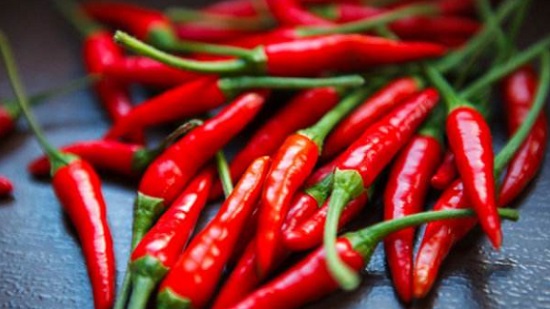【留学生活】在纽约,遇见令人欲罢不能的小辣
- 来源: 未知
- 发布时间: 2018-07-19 11:59
- 责编: 好留学网
有些纽约人按辣度评判川菜。小辣椒餐馆也能让顾客经受辣椒的折磨。但是这家川菜馆与纽约其他许多优秀川菜馆的仍有着明显区别。

Little Pepper began life a dozen years ago in the competitive Chinese nucleus of downtown Flushing, Queens. Five years ago, Cheng Ying Wu and her husband, Gui Ping Huang, the owners, moved it northwest to College Point, where its nearest rival is a graffiti-scrawled storefront across the street selling takeout chop suey and chow mein. Little Pepper is not entirely free of American Chinese food, but its pork lo mein is not one of its chief attractions.
十多年前,小辣椒川菜馆(Little Pepper)诞生在皇后区法拉盛闹市区竞争激烈的华裔聚居地。五年前,餐厅老板吴成英(音译)和丈夫黄贵平(音译)把餐厅搬到了西北方向的College Point。在那里,它最近的对手是街对面一个画满涂鸦、提供炒杂碎和炒面外卖的店面。小辣椒川菜馆并非完全未受美式中餐的影响,不过猪肉捞面并非它的招牌菜。
The reason to drive to College Point Boulevard (by far the easiest way to get to Little Pepper, about a 20-minute bus ride from the nearest subway stop) is to eat undiluted Sichuan cooking, like silken tofu with scallions. Little chilled blocks of tofu will be covered with scallions and chopped peanuts turned the color of bricks by chile oil. Woven through the burning heat of the oil will be the unmistakable, medicinal hum of Sichuan peppercorns. The crunch and burn and throb of the sauce crashes against the soft and passive tofu; the contrast enhances both.
我开车去College Point大道(到目前为止,去小辣椒川菜馆走这条路最方便,它离最近的地铁站要坐大概20分钟公交车)是为了吃上正宗川菜,比如柔滑的葱烧豆腐。小小的冷豆腐块布满葱花和碎花生,辣椒油把豆腐块染成了红色。经过滚烫辣椒油洗礼的是绝不会被认错的花椒。滋滋作响、热腾腾的酱汁与柔软、被动的豆腐形成鲜明对比,相辅相成。
Or the kitchen may take another slab of silken tofu and do something else. This time it will be warm, in bigger chunks that cleave into two pieces at the touch of a spoon. The dressing will be tangy bits of ground pork in black vinegar and a shimmering gloss of chile oil. The dish, of course, is ma-po tofu. At Little Pepper, it combines power and nuance to make other renditions around the city seem heavy-handed.
这家餐厅还能用柔滑的豆腐做出别的菜。比如把豆腐切成更大的块,用勺子一碰就能裂成两半,也更烫嘴。配料是用黑醋和亮晶晶的辣椒油炒出的猪肉末,香味扑鼻。这道菜当然是麻婆豆腐。小辣椒川菜馆的这道菜既有力道,又微妙,相比之下,纽约市其他餐厅这道菜的做法就显得很粗暴。
Some New Yorkers grade Sichuan food by its firepower. When their tongues have been reduced to smoldering ruins, they declare themselves (through sign language) to be in a great restaurant. Little Pepper is capable of inflicting great pain when needed. Its Chong Qing chicken, which weaponizes capsaicin in just about every known form and should not be faced without a full glass of water or beer at hand, is proof of that. But what sets Little Pepper apart from the many other good Sichuan restaurants in the city is its skill at bringing spicy forces into tense alignment with sweet, sour and salty ones.
有些纽约人按辣度评判川菜。如果他们的舌头辣麻了,他们就会(通过手语)宣布这家餐厅很棒。必要的时候,小辣椒餐馆也能让顾客经受辣椒的折磨。比如重庆辣子鸡,它把辣椒的威力发挥到极致,要是手里没有一满杯水或啤酒,真别去尝试这道菜。但是小辣椒川菜馆与纽约其他许多优秀川菜馆的区别在于,它能把辣味与甜味、酸味和咸味搭配的力度把握得恰到好处。
It’s possible that the chefs at Little Pepper cook with extra precision because real estate is cheaper in College Point than in Flushing, allowing the owners to spring for the roomy, shipshape kitchen in the back. This at least is what I tell myself as I’m driving past the exit for Flushing and Little Pepper is still another 15 minutes away.
小辣椒川菜馆的大厨们做菜可能格外精准,可能是因为College Point的地价比法拉盛低,餐厅老板们能在后堂配置宽敞整齐的厨房。至少,当我开车经过法拉盛出口,还得再开15分钟才能到达小辣椒川菜馆时,心里就是这么想的。
I’ve always found a parking space within sight of the front door, which doesn’t often happen in downtown Flushing. Inside, there is art everywhere: a mural of oversize peonies in red and pink; small canvases of an empty, wrinkled red plastic bag and a still life with Spam; a larger painting of a crushed Coke can over the round table where in quiet moments the employees top and tail a heap of beans for the excellent dry-sautéed string beans.
我总能在餐厅门口附近找到车位,这样的好事在法拉盛闹市区并不总能让你赶上。餐厅内部随处可见艺术品:红色和粉色超大牡丹壁画;描绘一个皱巴巴的红色空塑料袋的小幅帆布画以及世棒午餐肉(Spam)静物写生;还有一幅更大的、表现被压扁的可乐罐的油画——空闲的时候,员工们会在这幅画下面的大圆桌上给一堆豆角去头去尾,为美味的干煸豆角备菜。
English is not one of the restaurant’s core competencies. In the middle of my last lunch there, a waiter handed the phone to one of my guests. What did he want? It was unclear at first. Eventually an odd relay game began; my guest talked to a customer who was trying to place a takeout order, then looked for each dish on the menu and pointed. Finally the waiter wrote it down. It took about five minutes. When the customer walked in to get his food, it was like seeing a minor celebrity.
说英语并不是这家餐厅的核心竞争力之一。上次我在那儿吃午餐时,一名服务员把电话递给我的一位客人。他这是要干嘛?一开始我们都摸不着头脑。然后一场奇怪的接力游戏开始了。电话那端是一位想点外卖的顾客,我的客人按照对方的指示在菜单上找出每道菜,指给服务员,服务员再记下来,前后大概花了5分钟。当那位顾客来拿外卖时,我们感觉像见到了一位小明星。
I don’t recall what he ate, but everything I had is bright in my memory. First, super-crisp scallion pancake wedges dunked in a black, tangy, syrup-thick sauce. Then thin, chewy slices of beef tendon in chile oil, classic and great. Thin-skinned dumplings of juicy, sweet pork followed, resting in a pool of vinegar and chile oil. Sautéed snow pea leaves were next, and too salty.
我不记得他点了什么,但我清楚记得自己吃过的每一道菜。首先是无比松脆的大葱煎饼,切成楔形,蘸上如糖浆般浓稠的香味浓烈的黑色酱汁。然后是一道经典美味:用辣椒油拌的很有嚼头的薄切牛腱肉。接下来是美味多汁的薄皮猪肉饺子,盛放在用醋和辣椒油调制的酱汁里。下一道菜是炒豌豆苗,太咸了。
At last a big main course: “lamb with hot and spicy sauce,” also known as cumin lamb because that spice dominated the intensely fragrant dry rub clinging to the tender strips of meat. (There was no sauce to speak of, just stir-fried onions and green chiles.) And a whole fish hidden below fiery ground pork sauce, lip-smacking and deeply flavorful, like a Bolognese by way of Chengdu.
然后是一道大菜,名叫辣酱羊肉,又名孜然羊肉,因为香味扑鼻的柔嫩羊肉上主要附着的干调料就是孜然(这道菜里没有酱,只有炒洋葱和青椒)。还有辣猪肉末酱烧全鱼,特别入味,让人忍不住咂嘴,就像意大利波伦亚风格的成都菜。
The fish at Little Pepper often tastes muddy. The sauces, though, are so transporting that it doesn’t matter very much. And while not every dish on the menu is the best in town — the shredded potatoes with green peppers are pretty bland — the overall energy and variety of the cooking more than makes up for it.
小辣椒餐馆的鱼吃起来口感总是有点柴,不过它的酱汁太美味,所以也无所谓了。虽然菜单上不是每道菜都是纽约市最好吃的——青椒土豆丝就很一般——但它整体的烹饪活力和多样性大大弥补了这一点。
With so many peppers whiplashing around, the mouth needs something mild for balance. Tea-smoked duck dripping with warm fat is a fine and soothing appetizer. Cold smashed cucumbers with garlic are turning up in non-Chinese restaurants now, but few improve on the ones at Little Pepper. Corn kernels stir-fried with pine nuts are strangely easy to get along with. Fried rice, cooked with so much finely minced scallion that it turns the color of a Shamrock Shake, is a superb mop for fiery sauces.
因为很多菜里都有辣椒,所以嘴巴需要一些温和的东西来缓和一下。滴着温暖油脂的樟茶鸭是一道能抚慰人的开胃菜,非常好吃。拍黄瓜现在也出现在非中餐厅里,但是没有哪家做得比小辣椒川菜馆还好吃。松仁玉米令人意外地好吃。炒饭里放了很多葱花,颜色变得像三叶草奶昔,炒饭是冲淡辣味的上好选择。
On some days, I have gone giddy for the eggplant, as soft as pudding and slick with garlic sauce. On others, I’ve been sweetly captivated by the riddle of preserved eggs with green peppers. The riddle is not how the egg whites turn dark brown and transparent, while the yolks go creamily soft and ash-colored; that’s explained by the chemistry of a pH shift. What I can’t figure out is why the eggs’ mild whiff of sulfur is so appealing when they are eaten together with chopped mild green chiles and decidedly unmild red chile oil.
有时候,我为茄子着迷,它和布丁一样柔软,因为加入蒜汁而变得非常光滑。有时候,我又迷上青椒松花蛋。它的谜题不是蛋白如何变成透明深棕色、蛋黄如何变成灰色,如奶油般柔软——这是pH值变化所引起的化学反应。我不能理解的是为什么松花蛋温和的硫磺味与不辣的碎青椒和辛辣的红椒油一起吃的时候口感会这么好。
But this is nothing compared with the enigma of Little Pepper’s “fried potato in hot sauce.” These are crinkle-cut French fries that, as far as I can tell, come out of a bag stored in the freezer. They are dark and ragged with a dry spice mix of coarsely ground cumin, roasted dried chiles, Sichuan peppercorns, salt and maybe MSG.
不过,这个谜团与小辣椒川菜馆的“辣酱炸土豆”相比不算什么。据我猜测,这种波纹薯条是储藏在冰箱里的袋装薯条。土豆颜色炸得很深,表面粗糙不平地附着着用孜然粒、干辣椒、花椒、盐,甚至有可能还有味精混合而成的干香辛料。
The questions torture me. How did crinkle-cut fries get into a Sichuan restaurant? How can I be so helplessly, irretrievably crazy about them? Why, when they cool and lose their allure, do I want to ask the waiter to drop them back into the fryer again? Is something wrong with me? What is this wild desire? And where is the hot sauce?
很多问题折磨着我:波纹薯条是怎么进入川菜馆的?我怎么会如此不可救药、不可挽回地迷恋它们?为什么在它们变冷、失去吸引力之后,我想让服务员把它们再放回冰箱里?我是不是有毛病?这种疯狂的欲望从何而来?还有,菜名中的辣酱在哪儿?
▎本文来源网络,由好留学网(ID:meiguo2017)整理发布。
如需引用或转载,请注明以上信息。
1、凡本网站注明“来源高顿网校”或“来源高顿”,的所有作品,均为本网站合法拥有版权的作品,未经本网站授权,任何媒体、网站、个人不得转载、链接、转帖或以其他方式使用。
- 上一篇: [日常百科] 美国生活常识面面观
- 下一篇:年度盘点:中国人在美国购房的六大主题!
-
18/05 留美必看,美国留学校外租房的五大问题
-
18/05 中国学生留学美国最喜欢去的三个州,你猜猜是哪?
-
17/05 90后留学生的心声,我们想让自己的孩子在中国长大





